/ Film History : Rope / essay
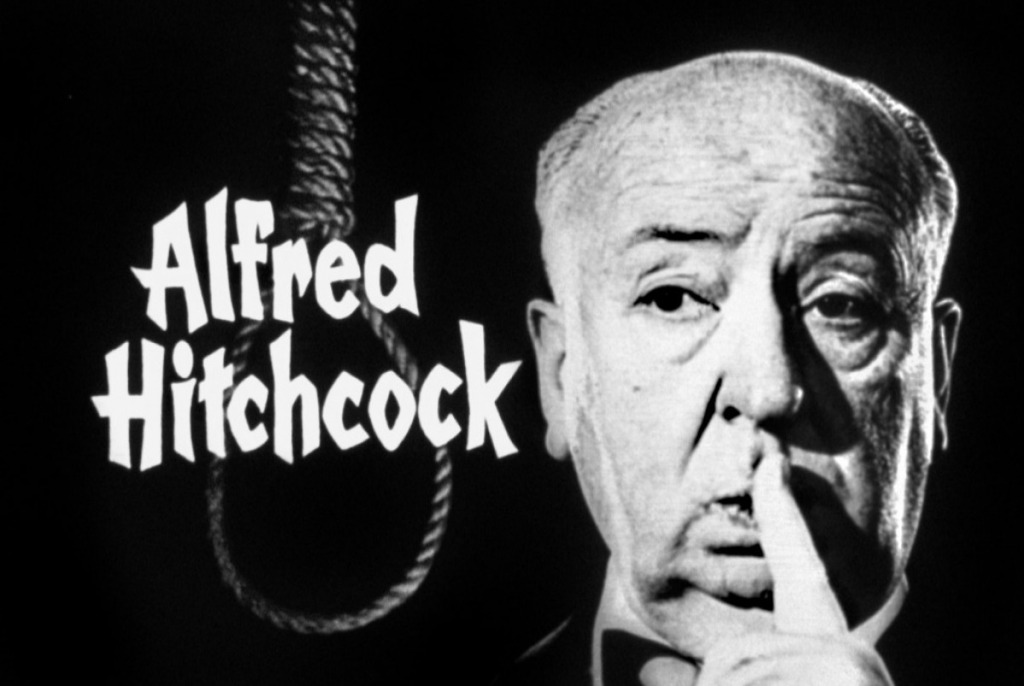
When they asked in an interview what triggered him to do the film Rope, Alfred Hitchcock's answer was brief and clear: The images of Rube Goldberg. Indeed, Goldberg and his inventions were the symbol of maximum effort to achieve a minimum effect.
In all Goldberg's works, one thing is quite clear: "Why would it be easy, when it can be intricate?". We could easily apply the same theory to the Rope. How? Cutting the dramaturgy of the film.
After all, Hitchcock said "In spite of everything, Rope is the most exciting film I have ever directed.''
And continuous,
They said that it was the most revolutionary technique Hollywood had ever seen. At first, some problems seemed to us absolutely irreconcilable. James Stewart, our star, could not sleep, not so much because of a suspense drama of the movie, but because of the confusing technique we used. Morris Rosen, the headmaster of the production design, saw "giraffes" in the middle of the night, and by the end of the recording he lost 5.6 kg.
And 2.7-ton heavy platform on wheels fell on the foot of our cameraman, Joe Valentine, because he was not fast enough.
DRAMATURGY
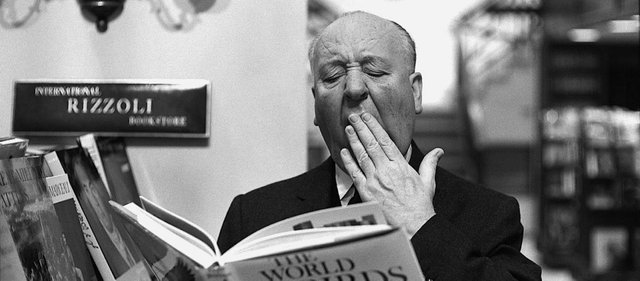
I've said long time ago, that I would like to direct a two hour film with a fictional story, where action would take place within two hours. I wanted to shoot a film that does not have any breaks - a movie in which the camera does not stop for a moment.
In the period of increased realistic tendencies (1940's), the starting point for this Hitchcock film was obviously the time; actually the idea of the continuity of time. All other features of the film are developing from that time continuum. Because, in other words, how to achieve 'no cutting time' rather than 'not cutting the film', no matter how literally it sounded.
Eighty minutes, how long the film lasts, is really the time of the movie. So, it's about eighty minutes of real, and movie life. The entire plot of Rope is about halfway between eight and nine o'clock in the evening. In these nearly an hour and a half we can find both murder and fun, detailed characterization of the characters, the gradual detection of the crime and the final breakdown.Hitchcock's main motive in terms of developing the plot was the fact that nothing can support the actors' actions, especially in the elements of suspense (which are here in a somewhat unusual way than in other Hitchcock movies), as an uninterrupted presentation. All in one breath - not to allow actors or audiences (and thus obviously to the whole technical team of the movie) to surrender.
LOCATION
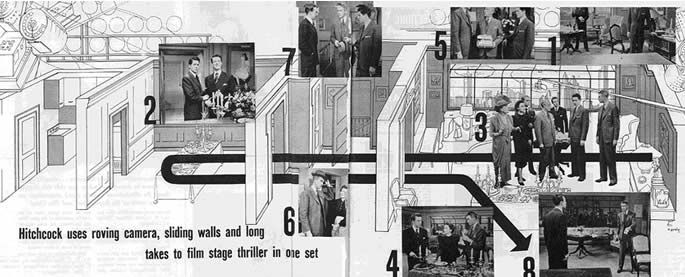
Given that it has been decided on time continuity, Hitchcock's place of action had to be one and unique, and in this case quite claustrophobic - a New York apartment.But instead of making the job easier, Hitchcock just complicated (where we go back to comparison with Goldberg).
The word is that the background of the living room where the action takes place is "a true miniature copy of a nearly 56 km long horizon with the outlines of New York City skyscrapers, illuminated with 8,000 electric bulbs and 200 neon advertisements, for which 150 transformers were needed.
It's a miniature that is completely faithful to Manhattan's image at night if viewed from the window on the 54th Street and First Avenue apartments. As Manhattan is in the background during the entire movie, it could not be used with a photo or a painted scroll, as the result would be too plentiful. Along with the flatness, the reason for the use of cycloramines was the illumination that changed from the sunset at the beginning of the film to the complete darkening at the end. In addition to that, there were clouds, which could not be photographed (because of the change), they were made of glass wool and hung on high wires in the background of the cyclone building.
Along with the clouds, the Sun had to be faithfully visualized, especially the sunset. To do this, Hitchcock's photographers captured the sun from three different locations - from the top of the New York skyscraper, from the roof of an unfinished building in Los Angeles and from the rim of Santa Monica on the Pacific Ocean. The sunset captures the hour and 45 minutes at five-minute intervals to get a continuous effect.
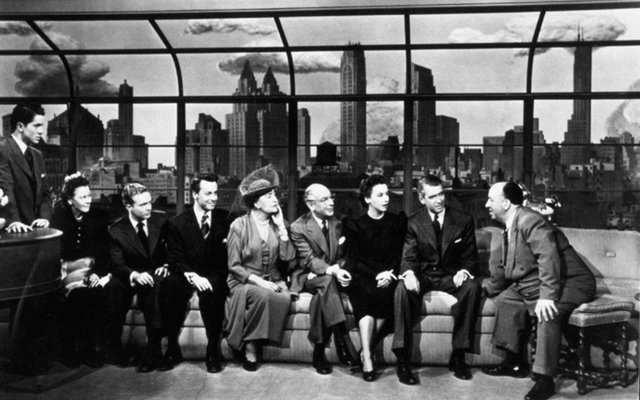
PLOTLINE & ANALISYS
Philip Charles (Farley Granger) and Brandon Shaw (John Dall), two wealthy and intelligent students, plan the so-called " perfect murder. They invite a colleague David Kennedy in their apartment, choke him and put him in a suitcase to prove their power. After that, they organize a morbid party in honor of their act, to which they invite David's fiancé, father and aunt, a former boyfriend, maid and Rupert Cadel (James Stewert), Philip and Brandon's favorite professor, who also spoke about "murder as art for selected 'at their lectures. In the conversation with Brandon, they impersonate the subject of perfect murder to impress the professor. On the other hand, Philip becomes more nervous and nervous.
Although the story originated from theater play of the same name by Patrick Hamilton, it is considered that the film is inspired by real events- the case of Leopold and Loeb (1924). This case is about two college students, who killed fourteen-year-old Bobby. Both were incredibly intelligent: Leopold studied law, spoke five languages and was known as a top ornithologist, while Loeb was the youngest graduate of the University of Michigan and planned to switch to Harvard. What about the innocent murder of a fourteen-year-old?
The same motive as in Brandon and Philip: only to prove Nietzsche's theory of ' Übermensch': Moral strength is different from the morals of weakness and therefore all values need to be re-examined (find new and break old). From such points of view, Nietzsche sets the ideal of a new man - Übermensch ; "In the will of the servant I have found the will to be the master," 8 quotation is one that best describes the power and desire for power as the highest value. And just from this desire for power, from this superiority comes art of murder, or murder as art, a theme that Rupert just started in his lectures, and Brandon and Phillip tried to "perfect it" in reality. The whole doctrine could be summarized in this dialogue of the film:
-Brandon, don't you think this party was a mistake?
-Weakness is the only error.
-Because it's human?
-No, but because it's normal.
There is another question that needs an answer: Why was Hitchcock at this time choosing this issue? Well, it was 1948, the period just after the Second World War and the collapse of national socialism. And on what was the idea of national socialism founded? It is on the theory of superiors of the Aryan race.
After all, let's look at the period of the novel Crime and Punishment of Dostoevsky. Dostoevsky handles the variation of the same idea: the young student of law Raskolnikov, thinking of justice and injustice among people, comes to the conclusion that some people's death would be useful to the whole society and that their lives could save more lives. The novel's work takes place in the 19th century, the period of Roman's rule, marked by the ever-increasing demands of the middle class for the ruling party, with occasional outbursts of political violence, followed by waves of state repression. It is quite obvious that the strong crisis of human identity, the crisis in society in general, is the perfect basis for the fruitful development of the theory of superiority.
THE CHEST IN THE MAIN ROLE

Every crime master aims to bring the audience to the very edge of the seat. The ingredient that will retain them there is called a "suspense". The producers cry for it, the writers desperately seek inspiration, and the actors scream with happiness when they finally get it. They often ask me what it's actually about. As far as I'm concerned, tension is achieved when you allow the audience to play God.
Suppose, for example, that you have six characters in the crime. Someone has been killed, and all six are possible perpetrators, but none of them knows who the real one is, and neither does the audience. One of the characters, a young man, stands in a room full of shadows, his back to the door, when an unknown figure in a robe and black hat sneaks through them and knocks him out.
It's a brutal act, but if the audience still does not know if the boy is a killer or a hero, they will not know whether to call on that act or to mourn the young man.
But if the audience knows everything, if all the secrets are revealed to them, they will try to get out of their heels because they know what kind of fate awaits the poor actors. This is what I call 'playing God
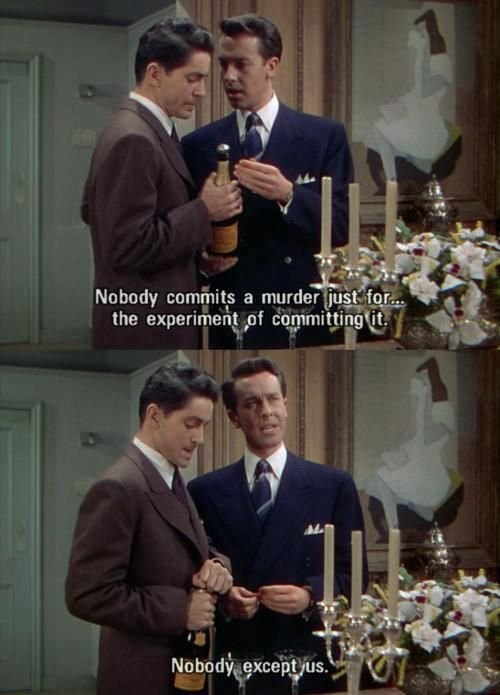
In Rope, Hitchcock gave the auditorium exactly this role - "playing God". Not only did he play with real people, viewers, but also with movie characters. Ironically, but true, he gave us the same power Brandon and Phillip want in the movie.
The fact is that it is a movie where the public knows from the beginning - the characters are confused. We all know who the killer is and how it happened. Therefore, the tension was not built on the motive for the killer to be revealed to viewers, but to characters in the movie! And this huge role has a leitmotif that spins the entire film, which is the chest!
It is constantly in the frame, actors constantly 'scream' around it, and there is the tension: Will the contents of the chest (and thus the rest of the story) be revealed? Every time somebody approaches the chest, the degree of tension is getting bigger and bigger. The situation is the fact that the chest is unlocked, and therefore available to everyone!
CAMERA MOVEMENTS
Hitchcock's idea was to shoot the whole movie in one shot. But at the time, it was not possible. Namely, movie roles were about ten minutes long. At the end, the film was shot in ten frames. Only three frames last for ten minutes (first, fifth, and eight), five frames last between seven and eight minutes, while the last two last for about five minutes. The total is about 80 minutes of real-time movie, which has already been said. To conceal cuts, Hitchcock took advantage of camera movements.
Here are the ten cuts:
This was my rough translation from Croatian to English from an essay by M.Ratkovic ''Dramaturgija filma Konopac, Alfreda Hičkoka'' that can be seen in full at the www.hfs.hr.
Great thinking and great post i like your post thanks for sharing dear
Great stuff, thanks for sharing. Probably wouldn’t have been able to read this otherwise. What made you decide to translate this?
@theartlaw
I just bumped into this great article and wanted to share it with the community, it was really a pleasure to translate it :)
Fantastic work then. Thanks for sharing, good to see another film buff on here!
Wow this cool guy. I like this with your post